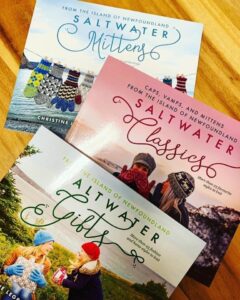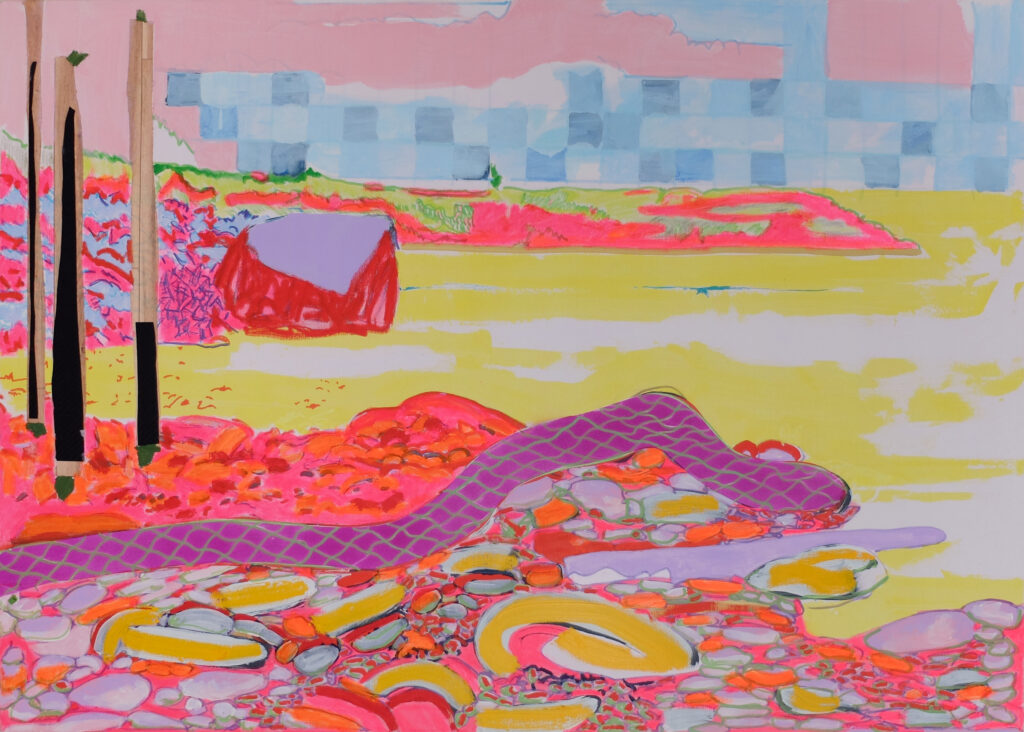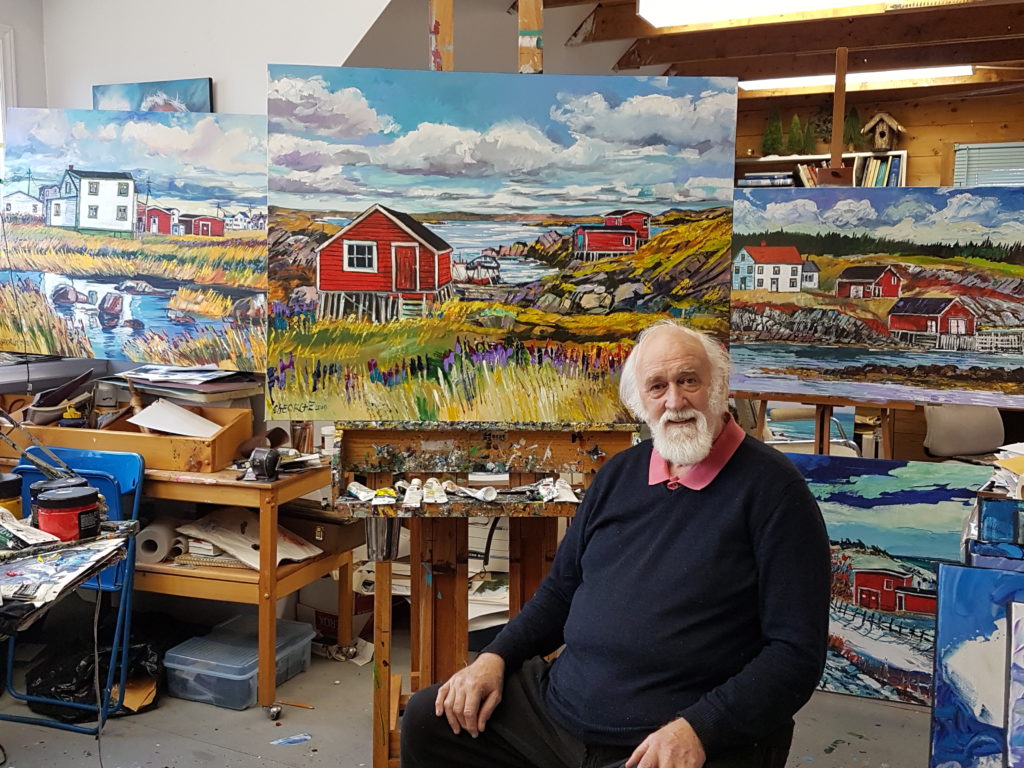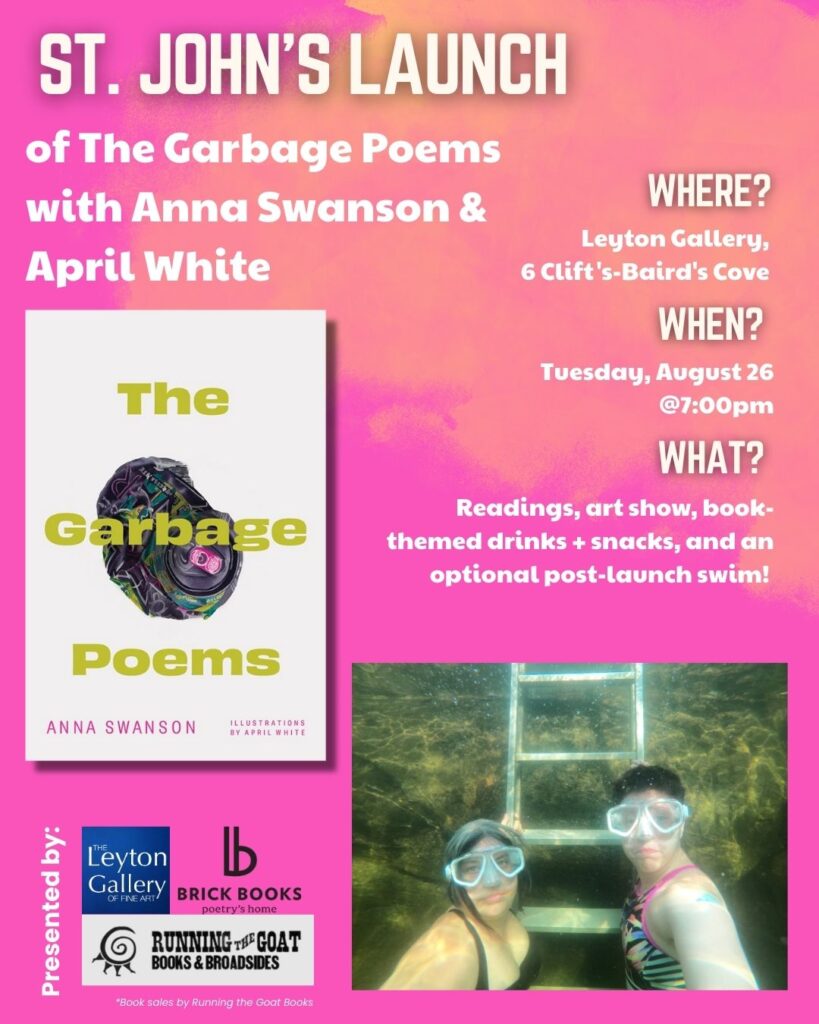Fashion is a wide word by Bill Coultas
April 2022
At a time when many small businesses across the country, including craft-related ones, have folded due to the pandemic, the Craft Council of Newfoundland and Labrador is marking its 50th Anniversary. The CCNL has seen steady, incremental success over the past many years, due to good stewardship, committed staff and volunteers, and an organization that promotes a wide variety of products that epitomizes professionalism, polish, and panache.
Including fashion.
In this province Barry Buckle is often identified with the modern image we have of fashion design. He has been involved in the fashion industry for over 30 years and has worked in a variety of countries for many different companies. His early focus was like any young, like-minded designer, aiming for the top of his industry. But as time wore on, Buckle began to realize that in working for large corporations you lose some of your own personal creativity. It’s an old story: you’re a small cog in a big machine. So, in 1998 he returned to Newfoundland. Though it was a financial challenge for a few years, Buckle quickly found endless inspiration in his home province. His creativity blossomed and new personal doors opened up. Today Buckle is firmly established as a clothes designer who is presently an instructor at The Anna Templeton Centre.
The late 1990s was also a time when the craft industry here was undergoing its own struggles. For many years craftspeople were producing items like sweaters, socks, mittens, and the like, that if not underappreciated, were usually underpriced. You could get a hooked rug for a song. That was never more evident than it was to Frances and Maxine Ennis when they decided to take up rug hooking. As it is with many crafts, they started simply for the love of it, and were inspired by the works of some older women like Louise Belbin of Grand Bank, who over the years designed hundreds of poked mats, hooked rugs and unique quilts and was featured in the book ‘Twas a Way of Life, which profiled six traditional crafts. Also, there was a revival among women of Change Islands who came together in 1994 to ensure the cherished tradition of rug hooking would not fade away.
But there was a problem and it had to do with attitude. It takes a lot of work to hook a rug (or produce any fine craft): collecting the material, creating a unique design, picking out the right colours, and doing the actual hooking all took time and expertise. But the NL public weren’t ready to pay dearly for something they could get, albeit mass-produced, for much a lower price. The Ennises weren’t willing to compromise. They demanded a fair price for their work which meant doubling the going rate at that time. They sold their work through two outlets of The Five Island Art Gallery, one in St John’s and the other in Tors Cove on the Southern Shore.
At first people balked at the expense but over time came to realize the art and beauty of the hooked rug. Nowadays you certainly wouldn’t put that kind of object on the floor. It goes on the wall, proudly displayed as if it was a painting by Mary Pratt or Gerald Squires.
In many ways that ‘higher end’ aspect defines one of the differences between then and now. To exhibit or sell in connection with the Craft Council you have to go through ‘Standards’, meaning the bar is set high. Anne Manuel, the former Executive Director, noted that the difference from then to now is that crafts are “more polished, more diverse in technique, materials, and design.” But ‘Standards’ was never meant to exclude; rather its purpose is to play a more positive role. “It was always intended to offer advice and guidance to enable craft people to make the best possible products they could and thus be able to demand the price that only a high-quality product can warrant. The better the quality the better the return to the craft person.”
It’s not easy under any circumstances to be self employed as a craftperson but help is indeed available. The CCNL was, and continues to be, instrumental in the creation and continuation of the Anna Templeton Centre, the craft incubator in Quidi Vidi Village Artisan Studios, and The Clay Studio.
“More and more students are staying and building a career right after their graduation” said Artisan and educator Susan Furneaux. “I think it is a testament to the quality of the Textile and Apparel Design Program at the Anna Templeton Centre that gives the curriculum and the education required for a successful future. The Quidi Vidi [Studios] is also a part of the equation to success. It offers a ‘work term’ of sorts to our graduates that I feel is much more beneficial than paper for those who do not want to take an academic path.”
When you look around your house or apartment chances are that you possess a piece of pottery, an item of clothing, or a unique product that has been crafted by a graduate of one of those institutions. Along with the physical, hands-on aspect, those organizations provide business courses and support, professional development opportunities, and contacts to professional organizations. In the mix, close contact with other artisans usually occurs – an important ingredient in the development of skills. Feedback in anyone’s books is usually a good thing.

And if you are still wondering how effectively fashion and craft meet you need not look any further than the recent success of Christine LeGrow and Shirley Scott. Boulder Books published Saltwater Mittens, Saltwater Gifts, and Saltwater Classics, their detailed offerings of Newfoundland traditional knitting designs. Each were runaway bestsellers. “Yes, hand knit mittens, gloves, trigger mitts, and wristies are definitely considered fashionable,” Scott said. “They are purchased in a variety of styles, colours, and fibres to match fashionable outwear of all types.”
“The success of the books was a total surprise,” continued LeGrow. “At first, both Shirley and I wanted to get the traditional patterns from Newfoundland mittens printed in book form for future generations of knitters.” Also unexpected was how social media played a large role once the book got out into the marketplace. From its publication “we have presented Zoom presentations sponsored by yarn stores. Facebook groups discuss the books and knits. Podcasts of other craft people and wool shops have featured and/or discussed our books and presented knit-a-longs of our patterns. We receive emails and Facebook messages from all over here, the rest of Canada, US, European countries. A teacher at a school in Australia purchased copies for her students.”
Of the four categories designated by the Atlantic Canada Craft Awards for Excellence, three were captured by this province’s craftspeople in 202: Excellence in Product Design was won by LeGrow and Scott, while the Outstanding Retailer Award went to CCNL for their Shop and Pantry outlets, and Outstanding Exporter to Megan Jackman, owner of Ragmaw.
Those awards show how local craft people take a front row seat with the best world-wide. Hooked rugs, originally-designed purses, Labrador-inspired coat products, sweaters, pottery, jewelry, and stained glass, as well as locally made sea salt, herbs, spices, tea, and coffee all have stepped outside of the local market. The international audience has found that the NL sense of fashion, design, and high-quality production lines up with international appeal.
Rowena House, CCNL executive director, estimated that the pre-pandemic revenue figure for provincial crafts was $33.6 million with growth expected to hit $41 million in 2022. From one year to the next progress is very notable. And House saw no end in sight.
Pretty impressive figures by any standard.
And no doubt fashionable. Wouldn’t you say?
Bill Coultas is a filmmaker, photographer and author whose work can be found at springwaterartstream.com
Photos: Shirley Scott; Scott and Legrow’s books



